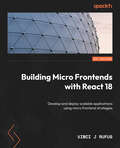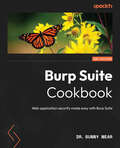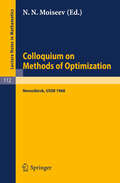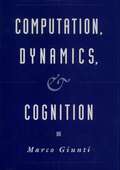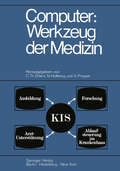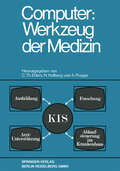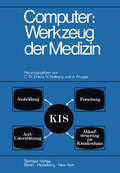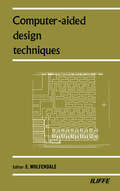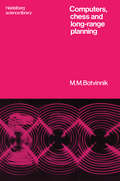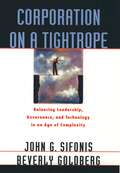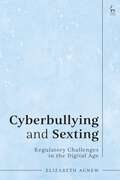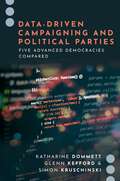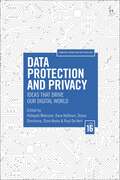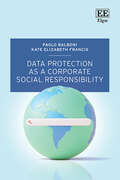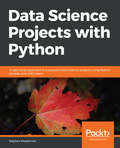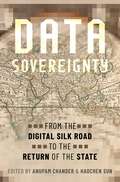- Table View
- List View
Building Full Stack DeFi Applications: A practical guide to creating your own decentralized finance projects on blockchain
by Samuel ZhouTake your blockchain and Web3 development skills to the next level by building real-world full-stack DeFi applications with Solidity and JavaScriptKey FeaturesGain the knowledge you need to start implementing DeFi principles in practiceLearn how to build full-stack real-world DeFi products from scratch with step-by-step instructionsLeverage tools like Hardhat, Ethers.js, Node.js, React.js, Solidity, and Web3 for effective DeFi application developmentPurchase of the print or Kindle book includes a free PDF eBookBook DescriptionEnter the world of Decentralized Finance (DeFi) with Building Full Stack DeFi Applications. Understand how this blockchain-based financial technology, designed to manage crypto assets, runs independently without centralized financial institutions like banks and brokerages, eliminating the fees that banks and other financial companies charge for using their services. This book will show you how DeFi solutions are built with smart contracts running on blockchains and how they allow users to gain and earn crypto assets based on the trust of the smart contracts. This book uncovers the inner workings of DeFi by guiding you through the mathematical foundations and teaching you how to build real-world DeFi products with Solidity and JavaScript. As you progress through the chapters, you’ll learn how to implement smart contracts of liquidity pools to trade cryptocurrencies and implement staking, including farming features that allow users to earn. You’ll also find out how to create asset pools that allow users to lend and borrow cryptocurrencies and generate interest. Additionally, you’ll discover how to use Web3 libraries to build the frontend of DeFi products. By the end of this book, you’ll will be well acquainted with popular tools, libraries, and design patterns for implementing a full-stack DeFi application with Web3 and Solidity.What you will learnUnderstand the key concepts and principles of DeFi and how it worksGet to grips with smart contract development to solve complex problemsBuild your experience in designing, building, and deploying Web3 applicationsImplement liquidity pools and swapping features for seamless crypto exchangesDevelop staking and farming features for DeFi applicationsCreate smart contracts for crypto loans integrated with Web3 librariesWho this book is forIf you are a blockchain developer experienced in Web3 and Solidity development, or anyone interested in learning about blockchain and DeFi technologies, this book is for you. Product managers, executives, and other management professionals looking to start or delve into a DeFi project will also benefit from this book, as will developers and architects with basic blockchain knowledge who want to advance their skills in building full-stack DeFi products. Experience with Solidity, JavaScript, and Web3 will help you get the most out of this book.
Building Micro Frontends with React 18: Develop and deploy scalable applications using micro frontend strategies
by Vinci J RufusBecome a full life cycle developer by not only learning how to build micro frontends but also deploying and managing them efficiently in a cloud-native environmentKey FeaturesGo through strategies for building and deploying production-grade micro frontends on the cloudExplore the right choice and guiding principles to build different micro frontend patternsLearn how to use React the right way to build and deploy micro frontends with this step-by-step guidePurchase of the print or Kindle book includes a free PDF eBookBook DescriptionAlthough deservedly popular and highly performant tools for building modern web applications, React and single-page applications (SPAs) become more and more sluggish as your applications and teams grow. To solve this problem, many large web apps have started to break down monolith SPAs into independently deployable smaller apps and components—a pattern called micro frontends. But micro frontends aren't a perfect solution, but rather a double-edged sword. This book teaches you how to architect and build them with the right principles to reap all the benefits without the pitfalls. This book will take you through two patterns of building micro frontends, the multi-SPA pattern and the micro apps pattern. You’ll find out which patterns to use and when, as well as take a look at the nuances of deploying these micro frontends using cloud-native technologies such as Kubernetes and Firebase. With the help of this book, you’ll gain an in-depth understanding of state management, solving problems with routing, and deployment strategies between the different micro frontends. By the end of this book, you’ll have learned how to design and build a React-based micro frontend application using module federation and deploy it to the cloud efficiently.What you will learnDiscover two primary patterns for building micro frontendsExplore how to set up monorepos for efficient team collaborationDeal with complexities such as routing and sharing state between different micro frontendsUnderstand how module federation works and use it to build micro frontendsFind out how to deploy micro frontends to cloud platformsFigure out how to build the right development experience for teamsWho this book is forThis book is for intermediate- to advanced-level developers with a working knowledge of React and web application development with JavaScript and TypeScript. Knowledge of concepts like client-side and server-side rendering, React, NodeJS, Webpack, and the basics of Kubernetes and serverless computing is desirable, but not necessary.
Building Your Own JavaScript Framework: Architect extensible and reusable framework systems
by Vlad FilippovLearn how to craft elegant and well-structured software frameworks in a variety of JavaScript environments with this handy guideKey FeaturesExplore the gateway to the constantly evolving world of JavaScript frameworksNavigate the JavaScript development landscape and discover crucial software architecture patternsBuild your own framework for a variety of work-related projectsPurchase of the print or Kindle book includes a free PDF eBookBook DescriptionJavaScript frameworks play an essential role in web application development; however, no single framework works perfectly for all projects. This book will help you understand existing projects, design new software architecture, and maintain projects as they grow. You’ll go through software architecture principles with JavaScript, along with a guided example of structuring your project and maintenance guidance. This book covers framework planning aspects, enabling you to identify key stakeholders, understand JavaScript API design, and leverage complex abstraction. The second part of the book takes a practical programming approach to building your own framework by showing you how to structure modules and interfaces. As you advance, you’ll discover how to develop data-binding components, work with JavaScript APIs, and much more. While writing a framework is half the job, continuing to develop it requires effort from everyone involved. The concluding chapters help to achieve this by teaching you the crucial aspects of software maintenance and highlighting the constants of framework development. By the end of this book, you’ll have gained a clear understanding of the JavaScript framework landscape, along with the ability to build frameworks for your use cases.What you will learnExpand your knowledge of JavaScript frameworks within different runtimes and ecosystemsGet to grips with the technical aspects of structuring framework abstractions in JavaScriptGain an understanding of common patterns across various existing frameworksDiscover the usage of existing tooling such as TypeScript and GraphQLConfigure performance tests for your project and track down bottlenecks in the code baseUnderstand how JavaScript and the web evolve and what these systems will look like in the coming yearsWho this book is forIf you’re a JavaScript novice or an expert who wants to explore the world of JavaScript frameworks, this book is for you. This book introduces you to the history of frontend frameworks and guides you through the creation of your own framework. The chapters are designed to help developers build large projects for their full-time jobs and programmers who want to create open-source projects. A clear understanding of the JavaScript programming language as well as experience with existing software frameworks are all prerequisites.
Burp Suite Cookbook: Web application security made easy with Burp Suite
by Dr. Sunny WearFind and fix security vulnerabilities in your web applications with Burp SuiteKey FeaturesSet up and optimize Burp Suite to maximize its effectiveness in web application security testingExplore how Burp Suite can be used to execute various OWASP test casesGet to grips with the essential features and functionalities of Burp SuitePurchase of the print or Kindle book includes a free PDF eBookBook DescriptionWith its many features, easy-to-use interface, and fl exibility, Burp Suite is the top choice for professionals looking to strengthen web application and API security. This book off ers solutions to challenges related to identifying, testing, and exploiting vulnerabilities in web applications and APIs. It provides guidance on identifying security weaknesses in diverse environments by using diff erent test cases. Once you’ve learned how to confi gure Burp Suite, the book will demonstrate the eff ective utilization of its tools, such as Live tasks, Scanner, Intruder, Repeater, and Decoder, enabling you to evaluate the security vulnerability of target applications. Additionally, you’ll explore various Burp extensions and the latest features of Burp Suite, including DOM Invader. By the end of this book, you’ll have acquired the skills needed to confi dently use Burp Suite to conduct comprehensive security assessments of web applications and APIs.What you will learnPerform a wide range of tests, including authentication, authorization, business logic, data validation, and client-side attacksUse Burp Suite to execute OWASP test cases focused on session managementConduct Server-Side Request Forgery (SSRF) attacks with Burp SuiteExecute XML External Entity (XXE) attacks and perform Remote Code Execution (RCE) using Burp Suite’s functionalitiesUse Burp to help determine security posture of applications using GraphQLPerform various attacks against JSON Web Tokens (JWTs)Who this book is forIf you are a beginner- or intermediate-level web security enthusiast, penetration tester, or security consultant preparing to test the security posture of your applications and APIs, this is the book for you.
Business Process Automation with Salesforce Flows: Transform business processes with Salesforce Flows to deliver unmatched user experiences
by Srini MunagavalasaCreate seamless and structured workflows that can streamline complicated business processes with this comprehensive BPA bookKey FeaturesExplore business processes for automation to add value for your business usersAnalyze, evaluate, and devise effective ways to implement automation through Salesforce FlowsBecome an expert in flow orchestration and compose complex business processes using real-world examples, tips, and tricksPurchase of the print or Kindle book includes a free PDF eBookBook DescriptionThe low adoption of most IT projects often stems from a lack of business process automation. While business users get the functionality they need, the excessive manual steps involved in execution impede efficiency. Business Process Automation with Salesforce Flows will address this issue by helping you recognize the need for automation and guiding you through automating such processes. This book starts by quickly exploring various aspects of process automation using Salesforce Flows, covering flow nuts and bolts, flow structure, flow execution order, and different types of flows, as well as troubleshooting techniques to manage your processes using the Flow Builder tool. You’ll then become acquainted with the Flow Orchestration tool, which enables you to compose and orchestrate complex business processes. Through real-world scenarios, you’ll learn how to effectively automate business processes, follow the end-to-end business process flow, automate it using flow orchestration, and learn how to demystify and simplify business process automation. By the end of this book, you’ll be proficient in seamlessly automating your business processes without any hassle.What you will learnGain insights into gathering business requirements and identifying automation needsIdentify opportunities for improving business process flowsTranslate critical steps in the business process flow and automate them using Flow BuilderIdentify different types of Salesforce Flows tailored to various scenariosOptimize and troubleshoot Salesforce Flows for increased efficiencyDiscover ways to implement complex business process automation through flow orchestrationWho this book is forThis book is for system administrators, technical team members, and business analysts with a solid understanding of the Salesforce CRM software who want to effectively automate business processes using Salesforce Flows. Administrative-level Salesforce experience, along with some technical experience working with automation tools like Workflow, Process Builder, and Flows, will facilitate a better comprehension of the concepts covered in this book.
Cambridge International AS Level Information Technology Student's Book Second Edition
by Graham Brown Brian SargentOur AS Level student book is endorsed by Cambridge International Education to support the full syllabus for examination from 2025.Develop theoretical and practical IT skills with this comprehensive Student's Book written by experienced authors and examiners specially for the updated Cambridge International Education AS Level Information Technology syllabus (9626).- Improve understanding of concepts and terminology with clear explanations, labelled illustrations, photographs, diagrams, plus a glossary of key terms- Develop theoretical and practical skills with a range of exercises (multi choice through to discussion type questions), exam-style questions, step-by-step instructions and example answers that all ensure skills are developed alongside knowledge- Follow a structured route through the course with in-depth coverage of the full syllabusAlso available in the series:Cambridge International AS Level Information Technology Student Book eBook 9781036005597Cambridge International AS Level Information Technology Skills Workbook 9781510483064
Clean Code with C#: Refactor your legacy C# code base and improve application performance using best practices
by Jason AllsEnhance your programming skills through code reviews, TDD and BDD implementation, and API design to overcome code inefficiency, redundancy, and other issues arising from bad codeKey FeaturesWrite code that seamlessly integrates with other systems while maintaining well-defined software boundariesUnderstand how coding principles and standards elevate software qualityLearn how to avoid common errors while implementing concurrency or threadingPurchase of the print or Kindle book includes a free PDF eBookBook DescriptionTraditionally associated with Windows desktop applications and game development, C# has expanded into web, cloud, and mobile development. However, despite its extensive coding features, professionals often encounter issues with efficiency, scalability, and maintainability due to poor code. Clean Code in C# guides you in identifying and resolving these problems using coding best practices. This book starts by comparing good and bad code to emphasize the importance of coding standards, principles, and methodologies. It then covers code reviews, unit testing, and test-driven development, and addresses cross-cutting concerns. As you advance through the chapters, you’ll discover programming best practices for objects, data structures, exception handling, and other aspects of writing C# computer programs. You’ll also explore API design and code quality enhancement tools, while studying examples of poor coding practices to understand what to avoid. By the end of this clean code book, you’ll have the developed the skills needed to apply industry-approved coding practices to write clean, readable, extendable, and maintainable C# code.What you will learnMaster the art of writing evolvable and adaptable codeImplement the fail-pass-refactor methodology using a sample C# console applicationDevelop custom C# exceptions that provide meaningful informationIdentify low-quality C# code in need of refactoringImprove code performance using profiling and refactoring toolsCreate efficient and bug-free code using functional programming techniquesWrite cross-platform code using MAUIDevelop cloud-deployable microservices for versatile applicationsWho this book is forThis coding book is for proficient C# developers, team leads, senior software engineers, and software architects who want to improve the efficiency of their legacy systems. A strong understanding of C# programming is assumed.
Colloquium on Methods of Optimization: Held in Novosibirsk/USSR, June 1968 (Lecture Notes in Mathematics #112)
by N. N. MoiseevComputation, Dynamics, And Cognition
by Marco GiuntiCurrently there is growing interest in the application of dynamical methods to the study of cognition. Computation, Dynamics, and Cognition investigates this convergence from a theoretical and philosophical perspective, generating a provocative new view of the aims and methods of cognitive science. Advancing the dynamical approach as the methodological frame best equipped to guide inquiry in the field's two main research programs--the symbolic and connectionist approaches--Marco Giunti engages a host of questions crucial not only to the science of cognition, but also to computation theory, dynamical systems theory, philosophy of mind, and philosophy of science. In chapter one Giunti employs a dynamical viewpoint to explore foundational issues in computation theory. Using the concept of Turing computability, he precisely and originally defines the nature of a computational system, sharpening our understanding of computation theory and its applications. In chapter two he generalizes his definition of a computational system, arguing that the concept of Turing computability itself is relative to the kind of support on which Turing machine operate. Chapter three completes the book's conceptual foundation, discussing a form of scientific explanation for real dynamical systems that Giunti calls "Galilean explanation." The book's fourth and final chapter develops the methodological thesis that all cognitive systems are dynamical systems. On Giunti's view, a dynamical approach is likely to benefit even those scientific explanations of cognition which are based on symbolic models. Giunti concludes by proposing a new modeling practice for cognitive science, one based on "Galilean models" of cognitive systems. Innovative, lucidly-written, and broad-ranging in its analysis, Computation, Dynamics, and Cognition will interest philosophers of science and mind, as well as cognitive scientists, computer scientists, and theorists of dynamical systems. This book elaborates a comprehensive picture of the application of dynamical methods to the study of cognition. Giunti argues that both computational systems and connectionist networks are special types of dynamical systems. He shows how this dynamical approach can be applied to problems of cognition, information processing, consciousness, meaning, and the relation between body and mind.
Computer: Kolloquium Datenverarbeitung und Medizin 7.–9. Oktober 1968 Schloß Reinharthausen in Erbach im Rheingau
by C. Th. Ehlers N. Hollberg A. ProppeComputer: Kolloquium Datenverarbeitung und Medizin 7.–9. Oktober 1968 Schloß Reinhartshausen in Erbach im Rheingau
by C. Th. Ehlers N. Hollberg A ProppeComputer: Kolloquium Datenverarbeitung und Medizin, 7. – 9. Oktober 1968 Schloß Reinhartshausen in Erbach im Rheingau
by Carl Th. Ehlers N. Hollberg A. ProppeComputer-Aided Design Techniques
by E. WolfendaleComputer-aided Design Techniques deals with the tools used in computer-aided design, problems associated with software development for design, and techniques applied in the development of the REDAC system. The book covers topics such as program design, requirements of a program for general use, and representation of the circuit in a computer; device modeling, general linear modeling, and linear and non-linear transistor modeling; and non-linear transient analysis. Also covered are topics such as layout capacitances and inductances computation; the use of graphic display as a drawing aid for circuit layout; and the writing of design programs. The text is recommended for engineers and physicists who would like to know how computers can aid them in design, as well as computer experts who aim to write programs intended for design.
Computers, Chess and Long-Range Planning (Heidelberg Science Library)
by Michail M. BotvinnikMihail Moiseevich Botvinnik is an electrical engineer by profession; during World War II he headed a high-tension laboratory in the Urals and was decorated by the USSR for his accomplishments. At present, he is the head of the alternating-current machine laboratory at the Moscow Institute of Power Engineering. He is also a world-renowned chess player. He was born in 1911, and by 1935 had become a Grandmaster of Soviet chess. In 1948 he won the world chess championship and held the title until 1963 (except for a two-year break). His chess style has been characterized as deep, objective, serious, and courageous. In this book, the quality of his thinking is revealed in his study of the basic thought processes of master chess players, and his reduction of these processes to mathematical form. This formalization of thought processes is a contribution to science at three levels: at the immediate level, it provides a basis for a computer program that seems likely to succeed in playing chess; at the middle level, game-playing programs help us to study and rationalize the processes of planning and decision-making; and, at the highest level, the study of the mind in action, as in the game of chess, leads to an understanding of human thought and of the human psyche.
Containers for Developers Handbook: A practical guide to developing and delivering applications using software containers
by Francisco Javier UreaEffortlessly create and manage complex multi-component applications based on Docker containersKey FeaturesGain a clear understanding of software containers from the SecDevOps perspectiveMaster the construction of application pieces within containers to achieve a seamless life cyclePrepare your applications to run smoothly and with ease in complex container orchestratorsPurchase of the print or Kindle book includes a free PDF eBookBook DescriptionDevelopers are changing their deployment artifacts from application binaries to container images, giving rise to the need to build container-based apps as part of their new development workflow. Managing an app’s life cycle is complex and requires effort—this book will show you how to efficiently develop, share, and execute applications. You’ll learn how to automate the build and delivery process using CI/CD tools with containers as container orchestrators manage the complexity of running cluster-wide applications, creating infrastructure abstraction layers, while your applications run with high availability, resilience, and persistence. As you advance, you’ll develop, test, and debug applications on your desktop and get them ready to run in production with optimal security standards, using deployment patterns and monitoring tools to help identify common issues. You’ll also review deployment patterns that’ll enable you to solve common deployment problems, providing high availability, scalability, and security to your applications. Finally, you’ll explore different solutions to monitor, log, and instrument your applications as per open-source community standards. By the end of this book, you’ll be able to manage your app’s life cycle by implementing CI/CD workflows using containers to automate the building and delivery of its components.What you will learnFind out how to build microservices-based applications using containersDeploy your processes within containers using Docker featuresOrchestrate multi-component applications on standalone serversDeploy applications cluster-wide in container orchestratorsSolve common deployment problems such as persistency or app exposure using best practicesReview your application’s health and debug it using open-source toolsDiscover how to orchestrate CI/CD workflows using containersWho this book is forThis book is for developers and DevOps engineers looking to learn about the implementation of containers in application development, especially DevOps engineers who deploy, monitor, and maintain container-based applications running on orchestrated platforms. In general, this book is for IT professionals who want to understand Docker container-based applications and their deployment. A basic understanding of coding and frontend-backend architectures is needed to follow the examples presented in this book.
Corporation On A Tightrope: Balancing Leadership, Governance, And Technology In An Age Of Complexity
by John G. Sifonis Beverly GoldbergCracking the Data Engineering Interview: Land your dream job with the help of resume-building tips, over 100 mock questions, and a unique portfolio
by Kedeisha Bryan Taamir RansomeGet to grips with the fundamental concepts of data engineering, and solve mock interview questions while building a strong resume and a personal brand to attract the right employersKey FeaturesDevelop your own brand, projects, and portfolio with expert help to stand out in the interview roundGet a quick refresher on core data engineering topics, such as Python, SQL, ETL, and data modelingPractice with 50 mock questions on SQL, Python, and more to ace the behavioral and technical roundsPurchase of the print or Kindle book includes a free PDF eBookBook DescriptionPreparing for a data engineering interview can often get overwhelming due to the abundance of tools and technologies, leaving you struggling to prioritize which ones to focus on. This hands-on guide provides you with the essential foundational and advanced knowledge needed to simplify your learning journey. The book begins by helping you gain a clear understanding of the nature of data engineering and how it differs from organization to organization. As you progress through the chapters, you’ll receive expert advice, practical tips, and real-world insights on everything from creating a resume and cover letter to networking and negotiating your salary. The chapters also offer refresher training on data engineering essentials, including data modeling, database architecture, ETL processes, data warehousing, cloud computing, big data, and machine learning. As you advance, you’ll gain a holistic view by exploring continuous integration/continuous development (CI/CD), data security, and privacy. Finally, the book will help you practice case studies, mock interviews, as well as behavioral questions. By the end of this book, you will have a clear understanding of what is required to succeed in an interview for a data engineering role.What you will learnCreate maintainable and scalable code for unit testingUnderstand the fundamental concepts of core data engineering tasksPrepare with over 100 behavioral and technical interview questionsDiscover data engineer archetypes and how they can help you prepare for the interviewApply the essential concepts of Python and SQL in data engineeringBuild your personal brand to noticeably stand out as a candidateWho this book is forIf you’re an aspiring data engineer looking for guidance on how to land, prepare for, and excel in data engineering interviews, this book is for you. Familiarity with the fundamentals of data engineering, such as data modeling, cloud warehouses, programming (python and SQL), building data pipelines, scheduling your workflows (Airflow), and APIs, is a prerequisite.
Cyberbullying and Sexting: Regulatory Challenges in the Digital Age
by Dr Elizabeth AgnewDrawing on two empirical studies and influential theoretical frameworks, this book provides a critical overview of the key regulatory challenges concerning cyberbullying and sexting behaviours among young people (persons under 18 years).The author explores issues such as conceptualising the behaviours, examining the prevailing presence of sexism, myths and stereotypes surrounding gender roles and identity, and the limitations of criminal law as an effective regulatory tool. In doing so, identifying peer-based sexting behaviours as part of a continuum of sexual behaviour is promoted alongside the need to consider interventions beyond the legal landscape and in line with the United Nations Convention on the Rights of the Child. In the main, priority is given to non-legal responses and the need for more effective and comprehensive gender-sensitive education programmes. The book therefore provides a more developed conceptual understanding of sexting and cyberbullying behaviours among young people.
Data-Driven Campaigning and Political Parties: Five Advanced Democracies Compared (Journalism and Political Communication Unbound)
by Katharine Dommett Glenn Kefford Simon KruschinskiWhat is data-driven campaigning? According to prevailing accounts, this idea describes the rise of increasingly sophisticated, highly targeted, and often invasive uses of data deployed to suppress votes, manipulate voter preferences, or boost a candidates' popularity. The power of data is seen to be transforming campaigning practice and raising democratic concerns. And yet, there is a significant problem with these ideas: we have at best a partial understanding of how data-driven campaigning is practiced, and limited clarity about its implications. Presenting data from interviews with over 300 professional campaigners in Australia, Canada, Germany, the UK and US, we provide unique insight into the components of data-driven campaigning by political parties. This book makes three key contributions. First, distinguishing between data, analytics, technology and personnel, they give unmatched descriptive insight into these four components of data-driven campaigning, revealing significant variation in its operationalization, depending on party and country context. Second, introducing a novel multi-level theoretical framework, they isolate systemic, regulatory, and party level variables that help explain the reasons for these differences. Third, they consider the implications of their findings for debates about democracy, data and technology in the 21st century. Cumulatively, these contributions reveal that data-driven campaigning is not inherently problematic. Giving voice to practitioner perspectives, through interviews and innovative vignettes, this book recasts the debate around data-driven campaigning, offering important lessons for scholars, campaigners, and policymakers alike.
Data Labeling in Machine Learning with Python: Explore modern ways to prepare labeled data for training and fine-tuning ML and generative AI models
by Vijaya Kumar SudaTake your data preparation, machine learning, and GenAI skills to the next level by learning a range of Python algorithms and tools for data labelingKey FeaturesGenerate labels for regression in scenarios with limited training dataApply generative AI and large language models (LLMs) to explore and label text dataLeverage Python libraries for image, video, and audio data analysis and data labelingPurchase of the print or Kindle book includes a free PDF eBookBook DescriptionData labeling is the invisible hand that guides the power of artificial intelligence and machine learning. In today’s data-driven world, mastering data labeling is not just an advantage, it’s a necessity. Data Labeling in Machine Learning with Python empowers you to unearth value from raw data, create intelligent systems, and influence the course of technological evolution. With this book, you'll discover the art of employing summary statistics, weak supervision, programmatic rules, and heuristics to assign labels to unlabeled training data programmatically. As you progress, you'll be able to enhance your datasets by mastering the intricacies of semi-supervised learning and data augmentation. Venturing further into the data landscape, you'll immerse yourself in the annotation of image, video, and audio data, harnessing the power of Python libraries such as seaborn, matplotlib, cv2, librosa, openai, and langchain. With hands-on guidance and practical examples, you'll gain proficiency in annotating diverse data types effectively. By the end of this book, you’ll have the practical expertise to programmatically label diverse data types and enhance datasets, unlocking the full potential of your data.What you will learnExcel in exploratory data analysis (EDA) for tabular, text, audio, video, and image dataUnderstand how to use Python libraries to apply rules to label raw dataDiscover data augmentation techniques for adding classification labelsLeverage K-means clustering to classify unsupervised dataExplore how hybrid supervised learning is applied to add labels for classificationMaster text data classification with generative AIDetect objects and classify images with OpenCV and YOLOUncover a range of techniques and resources for data annotationWho this book is forThis book is for machine learning engineers, data scientists, and data engineers who want to learn data labeling methods and algorithms for model training. Data enthusiasts and Python developers will be able to use this book to learn data exploration and annotation using Python libraries. Basic Python knowledge is beneficial but not necessary to get started.
Data Protection and Privacy, Volume 16: Ideas That Drive Our Digital World (Computers, Privacy and Data Protection)
This book explores the complexity and depths of our digital world by providing a selection of analyses and discussions from the 16th annual international conference on Computers, Privacy and Data Protection (CPDP): Ideas that Drive Our Digital World. The first half of the book focuses on issues related to the GDPR and data. These chapters provide a critical analysis of the 5-year history of the complex GDPR enforcement system, covering: codes of conduct as a potential co-regulation instrument for the market; an interdisciplinary approach to privacy assessment on synthetic data; the ethical implications of secondary use of publicly available personal data; and automating technologies and GDPR compliance.The second half of the book shifts focus to novel issues and ideas that drive our digital world. The chapters offer analyses on social and environmental sustainability of smart cities; reconstructing states as information platforms; stakeholder identification using the example of video-based Active and Assisted Living (AAL); and a human-centred approach to dark patterns.This interdisciplinary book takes readers on an intellectual journey into a wide range of issues and cutting-edge ideas to tackle our ever-evolving digital landscape.
Data Protection as a Corporate Social Responsibility
by Paolo Balboni Kate FrancisThis progressive book critically analyses the current state of data protection enforcement and proposes a new auditable framework of practical guidelines to contribute to a more sustainable data-driven future.In outlining the debates relating to current data protection structures, Paolo Balboni and Kate Elizabeth Francis argue that legislation alone cannot sufficiently protect individuals’ fundamental rights and freedoms, and instead consider the pressing need for a more ethical approach to data protection. They present the Maastricht University Data Protection as a Corporate Social Responsibility Framework (UM-DPCSR Framework), outlining not only its features, but also how it can fill the gap left by the inadequacies of a merely legal approach to data protection. Balboni and Francis persuasively call on organisations wishing to contribute positively to society through data processing to adopt this framework and to commit to doing good with data or, at the very least, to avoid harming individuals by processing their data.Data Protection as a Corporate Social Responsibility will be a beneficial read for scholars and students with particular interest in corporate law and governance, human rights, internet and technology law, and privacy. It will also appeal to legal professionals, cybersecurity professionals, and sustainability specialists alike.
Data Science Projects With Python: A Case Study Approach To Successful Data Science Projects Using Python, Pandas, And Scikit-learn
by Stephen KlostermanData Sovereignty: From the Digital Silk Road to the Return of the State
Who, if anyone, should regulate the internet? Governments around the world have answered this question robustly: they will. Data sovereignty-the exercise of control over the internet-is the ambition of world leaders as a natural extension of traditional sovereignty and as a bulwark against the reach of foreign power. The question posed to governments now is not who should regulate the internet, but how should it be done. Data Sovereignty: From the Digital Silk Road to the Return of the State focuses on the question of territorial control over data flows and attempts by national and regional governments to place limits on the free movement of data across a global internet. Drawing on theories in political economy, international law, human rights, and data protection, this volume offers new theoretical perspectives and thought-provoking ideas about the nature and scope of data sovereignty. It examines the extent to which new technologies, such as artificial intelligence, robotics, and automation, pose challenges to data sovereignty and how those challenges might be addressed. In chapters that are both descriptively comprehensive and analytically rich, the book explains the national, regional, and international legal frameworks for regulating the digital economy. Professors Anupam Chander and Haochen Sun have assembled a distinguished team of experts across multiple fields to address the promise and pitfalls of data sovereignty in the context of trade liberalization, data localization, and human rights protection. In a world that is still grappling with the scope of the internet, Data Sovereignty offers a timely and thorough investigation of the ongoing conflict between the state and the internet. This is an open access title available under the terms of a CC BY-NC-ND 4.0 International licence. It is free to read on Oxford Scholarship Online and offered as a free PDF download from OUP and selected open access locations.

